Archive | Industry and trade RSS feed for this section
Industry and trade, Regional cooperation and integration
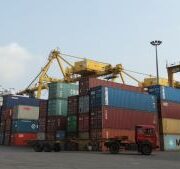 Industry and trade, Regional cooperation and integration
Industry and trade, Regional cooperation and integration
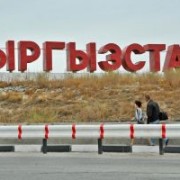 Industry and trade
Industry and trade
 Industry and trade
Industry and trade
 Industry and trade
Industry and trade
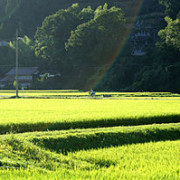 Finance sector development, Industry and trade
Finance sector development, Industry and trade
 Industry and trade
Industry and trade
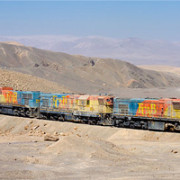 Industry and trade
Industry and trade
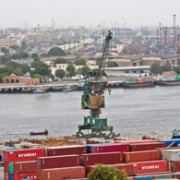 Industry and trade, Regional cooperation and integration
Industry and trade, Regional cooperation and integration
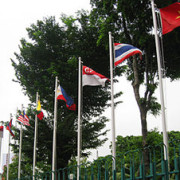 Industry and trade
Industry and trade

RCEP – a life raft for trade liberalization in Asia

There seems to be a pushback against trade agreements in the post global financial crisis era. The Trans-Pacific Partnership (TPP) was signed in early 2016, but US presidential candidates have spared no effort criticizing it so near-term ratification is highly uncertain. The WTO Doha Round is in the deep freeze after 14 years of negotiations. Unilateral trade liberalization has virtually come to a standstill.
A snapshot of e-commerce in Central Asia

In 2015, Central Asia made some important improvements in the environment for cross-border e-commerce: Kazakhstan's accession to the World Trade Organization (WTO) will boost commercial transparency, while the Kyrgyz Republic’s membership in the Eurasian Customs Union expands its consumer base. Why e-commerce? Two reasons. First, e-commerce reduces the cost of distance. Central Asia is the highest trade cost region in the world: vast distances from major markets make finding buyers challenging, shipping goods slow, and export prices high. Second, e-commerce can help pull in populations that are traditionally under-represented in export markets such as women, small businesses and rural entrepreneurs.
What Africa can learn from Asian supply chains

At this week’s 10th World Trade Organization (WTO) Ministerial Conference in Nairobi, Kenya, trade ministers are trying to advance 15 years of Doha Development Agenda talks to reduce trade barriers. The real issue, however, is whether African economies can follow East Asia's success in global supply chains amid “new normal" growth and rising inequality.
TPP as inspiration for the 10th WTO Ministerial Conference in Nairobi?

At the beginning of October, 12 Pacific Rim countries agreed on the Trans-Pacific Partnership (TPP) agreement. The TPP agreement has been hailed as a landmark trade pact, as it includes many issues that have so far not found their way into the rule of law in the multilateral trading system. As a reaction to the successful deal, World Trade Organization (WTO) Director-General Roberto Azevêdo announced that the TPP “will serve as an inspiration for WTO members” for the forthcoming 10th Ministerial Conference in Nairobi, Kenya. In this article, I argue that neither the process of TPP talks nor the content of the TPP agreement can provide a positive stimulus for the Doha Development Agenda (DDA) negotiations.
What next for the Trans-Pacific Partnership?

After more than 5 years of numerous missed self-imposed deadlines, trade ministers from the 12 participating Asia-Pacific countries finally concluded the Trans-Pacific Partnership (TPP) in Atlanta on 5 October 2015. The public fanfare accompanying the announcement led many to believe the agreement would soon come into force. Yet there is a lot that needs to be done before that happens, and there is no guarantee that it will. In this article, I examine two issues: (i) what concluding the TPP means in terms of what was achieved and what remains to be done; and (ii) what the TPP is likely to look like, given what we now know following the negotiations.
Japanese banks’ appetite for economic partnership agreements

When viewed through the lens of trade deals negotiated with the Association of Southeast Asian Nations (ASEAN), Australia, and the Trans-Pacific Partnership (TPP), Japan has shown recent willingness to engage in global free trade. However, is there any indication that these deals are striking a chord where it matters most, with Japan’s services sector, which comprises 70% of its economic activity?
Exploring the implications of TPP negotiations for Latin America

Chile, Mexico, and Peru are the three Latin American countries participating in the negotiations of the Trans-Pacific Partnership Agreement (TPP). Although these countries have cultural and geographical proximity, they exhibit different export structures and consequently different objectives toward the ongoing TPP negotiations. Even more intriguing is to understand the particular interests of each country in light of the key issues being negotiated and discussed, such as agriculture, intellectual property rights, and trade in services.
Investor-state dispute settlement: Rule of law or law of the jungle?

It is sometimes said that in politics it is not the text that counts, but rather the context. Policies that are seen as benign or even ignored by the electorate in one political constellation can suddenly fuel intense debate when there is a shift in the alignment of external forces. Think of Chancellor Merkel’s sudden decision to abandon nuclear power in Germany after the Fukushima reactor meltdown caused by the March 2011 earthquake in Japan. Nothing had changed about the safety of the German reactors themselves, but everything had changed about the broader context.
AEC is due—but what about institutions?

A pressing policy question facing Association of Southeast Asian Nations (ASEAN) leaders at their summit in April 2015 and beyond is whether the ASEAN Economic Community (AEC) can be sustained without more effective institutions. This article explores the link between achieving the AEC agenda and institutional effectiveness. To remedy the implementation gridlock, it proposes reforms to the leadership and the technical level of ASEAN bodies, prioritization of new institutions, an effective monitoring mechanism, and an empowered ASEAN Secretariat.
Plurilateral trade agreements: an overlooked but powerful force for international trade opening for Asia?

After over a gloomy decade of inconclusive talks, a small but important step was taken in early December 2014 to finish the Doha Round negotiations of the World Trade Organization (WTO). In 2015 and beyond, actions to arrive at a Doha Round Agreement should be accompanied by embracing new plurilateral trade agreements within the WTO. This move can benefit growth and development in Asia. This article reviews the outlook for the WTO Doha Round and examines the case for plurilateral trade agreements for Asia.


Search
Subscribe / Connect to Asia Pathways
Subjects
- Agriculture and natural resources
- Blog
- Capacity development
- Climate change
- Economics
- Education
- Energy
- Environment
- Finance sector development
- Gender
- Governance and public sector management
- Health
- Industry and trade
- Information and Communications Technology
- Infrastructure
- Miscellaneous
- Population
- Poverty
- Private sector development
- Regional cooperation and integration
- Sanitation
- Social development and protection
- Transport
- Uncategorized
- Urban development
- Video Blog
- Water
Recent Posts
- Artificial intelligence: A new driver for inclusive growth and development?
- Increasing trust in cross-border e-commerce and artificial intelligence
- Enhancing access to maternal and newborn healthcare in developing Asia
- Can electric vehicles lead the way to a sustainable future?
- Mitigating climate-related sovereign risk to accelerate action on the climate emergency




Recent Comments